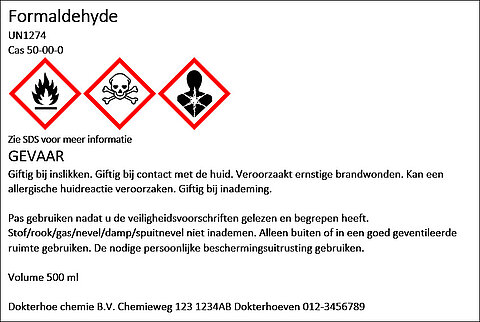Classification according to GHS
The Globally Harmonized System (GHS) is the UN's global system for the classification and labelling of hazardous substances. GHS ensures that a hazardous substance is classified in the same danger category almost all over the world. The hazard pictogram of a hazardous substance is therefore also the same.
Hazardous substances are classified into nine hazard classes. The hazard classes are further subdivided into subclasses and into hazard categories 1, 2, 3 or 4, of which category 1 is the most hazardous. These categories also have a signal word (danger or warning) attached to them.
In Europe, the global GHS system has been introduced in a slightly modified form: the EU-GHS, the European legislation for the classification, labelling and packaging of chemicals and mixtures. This regulation, also known as the CLP Regulation (Regulation on Classification, Labelling and Packaging).
An example of a GHS label is below.

